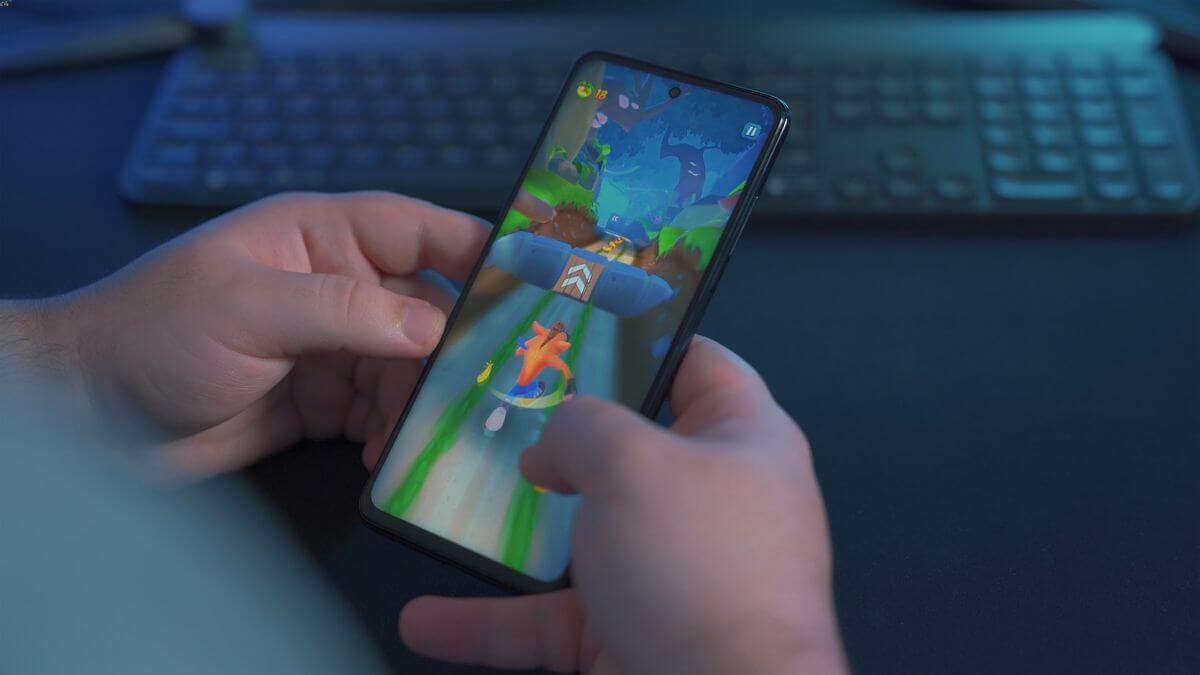If we’ve said it once, we’ll say it again: runners are here to stay. These endlessly popular games show no signs of slowing down despite maintaining top spots in the charts for over a decade (endless casual runners were reaching the top charts in 2011 and 2012). Since runners are always trending - and they’re among the easiest types of game to build - it’s time to take a peek into how they’ve evolved so you can capitalize on this highly marketable genre.
In this article, Uri Ron, Market Research Expert at Supersonic, shares his insights into how the runners of the past are informing present trends. At the end, look out for tips on how to apply these trends to design a future hit runner game.
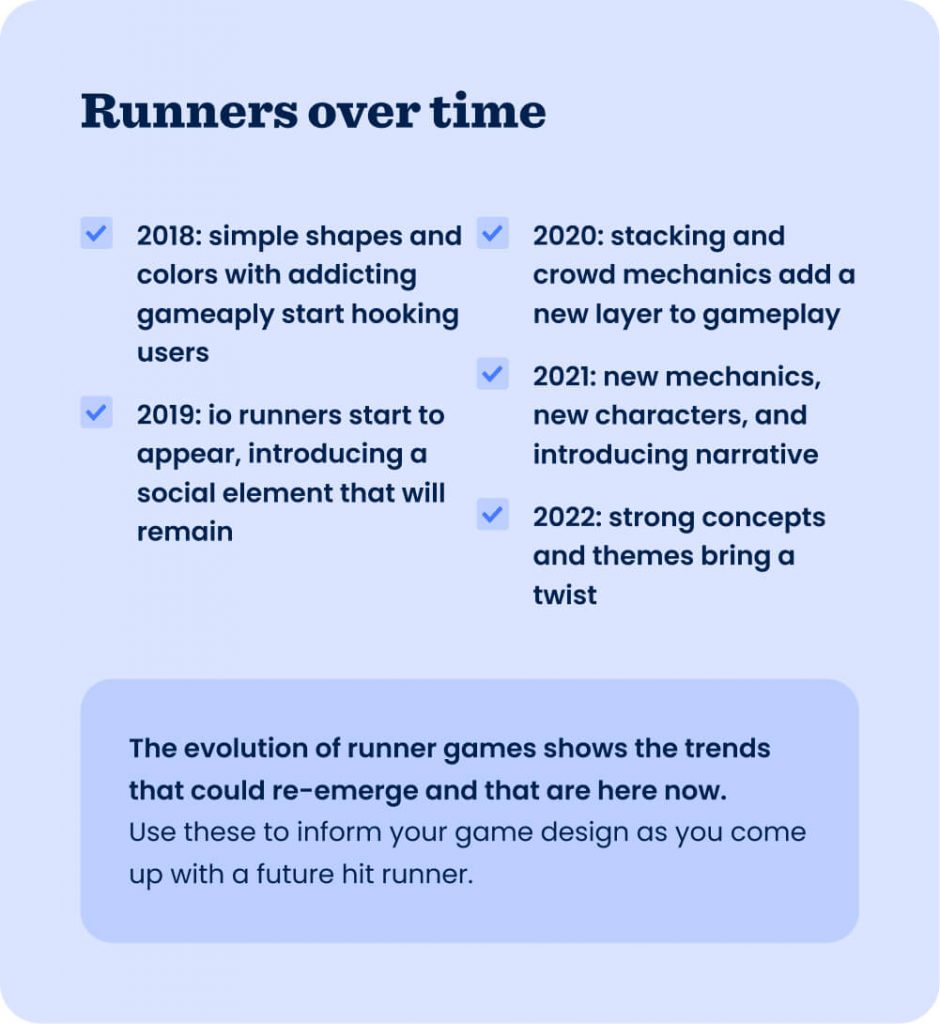
Peeking into the past to hack the future
The first versions of runners date back to 2011 and 2012. This is when we saw endless runner games in other genres, like Subway Surfers from SYBO - this casual game has remained among the most downloaded titles each year over the past decade. Jumping back to 2018, this was around the first year that runner games reached the top of the hyper-casual charts. These early examples were very simple, often featuring just balls and colors that highlighted the runner mechanic without any characters or narrative.
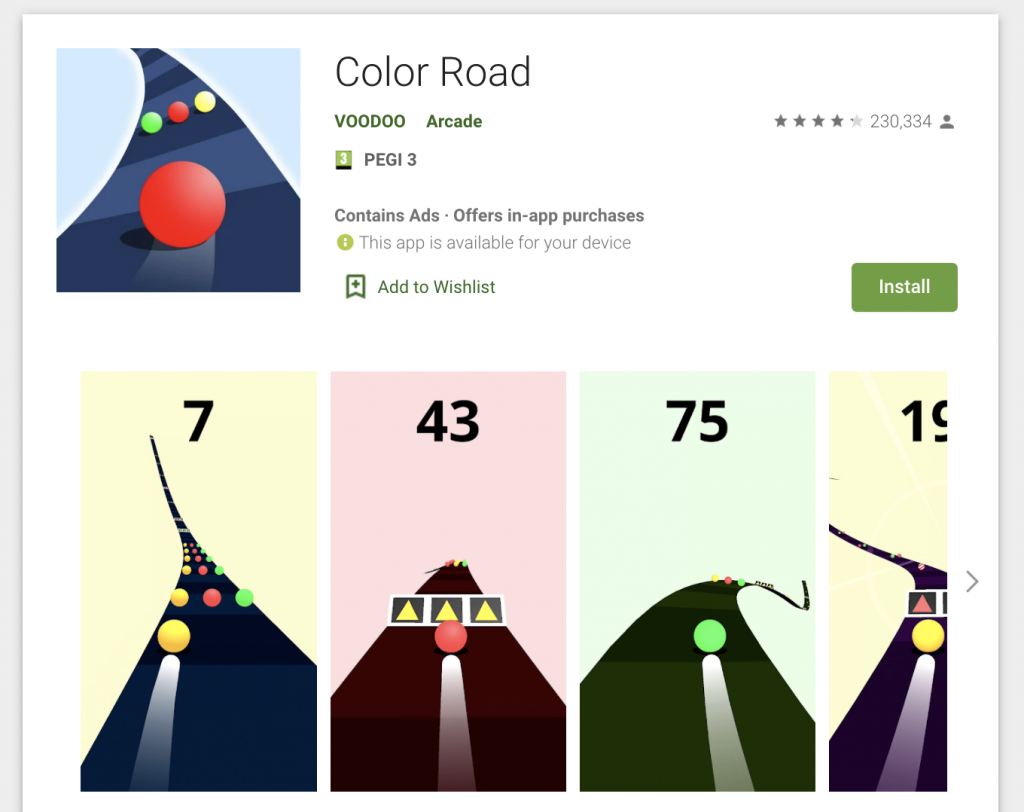
The core gameplay was enough to hook users. It makes sense, too, when you consider that hyper-casual audiences often play for shorter sessions than other genres - these simple runners were easy to play for those 2-3 minutes at a time.
In 2019, games featuring colors and balls remained at the top, but another type of runner began to emerge: the io runner. This pitted users against other, imaginary players that made the game feel more com8petitive and passing levels feels more satisfying. This also introduced a social element that becomes even more popular in future runners.
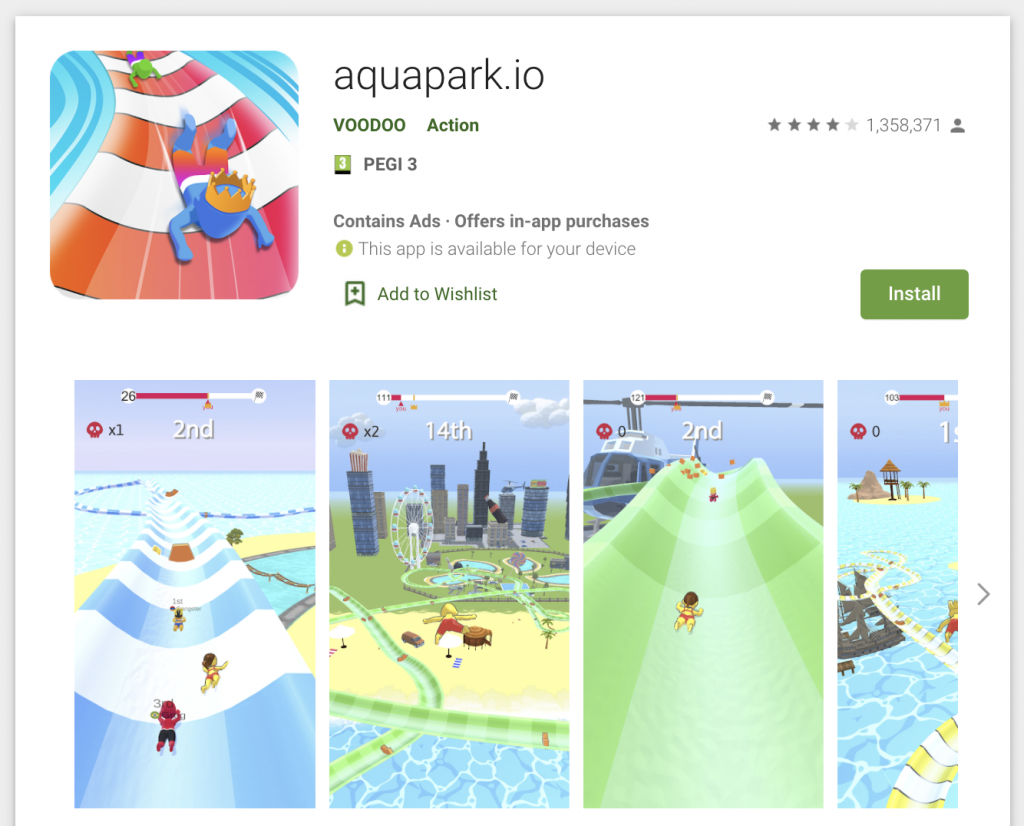
By 2020, characters in popular runners remained simple - they were often just stickmen. New mechanics took shape, though, with stacking and crowd mechanics taking over the top charts. These introduced an additional layer to the simple runner that made gameplay more dynamic and engaging. For example, Join Clash used a crowd mechanic that had users collect characters as they ran through the level. The game was a huge success and continued to gain momentum after launch to become the most downloaded game in the world in Q1 2021.
The runner game has maintained its popularity as snackable and engaging all of these years - but it’s changing. Looking back over the past few years, they’re evolving to include new mechanics that act as layers on top of the basic running mechanic. Now what do runners look like today?
Recent runner trends
Summing up the past year in runners, a clear pattern emerges: they’re all about collecting, changing, and growing. Let’s focus first on female stacking runners, which evolved on the stacking mechanic made popular in 2020. These games feature female figures stacking elements like heels, hair, and nails.
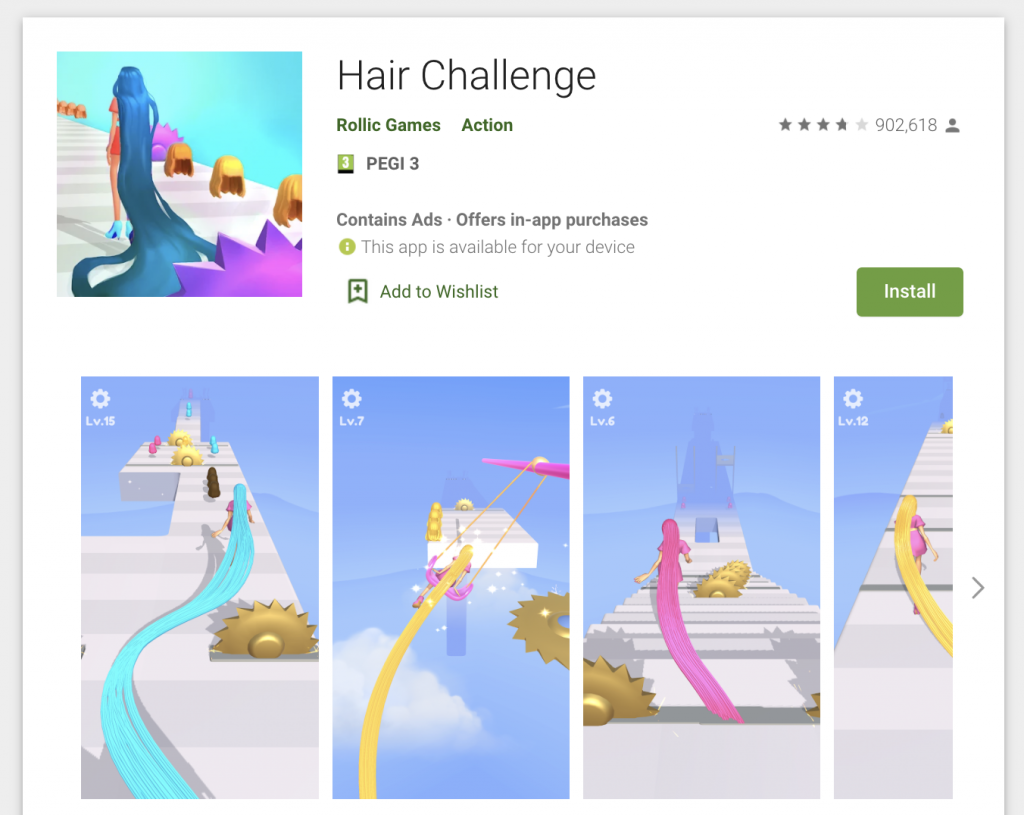
Then there’s the rise of the narrative runner. These games put a character at the forefront as users navigate levels and make decisions during gameplay that progress the narrative forward. Characters show off this progress by changing features like their clothes, body shape, and age by collecting items, avoiding obstacles, and going through gates - all while moving forward on a track like a traditional runner.
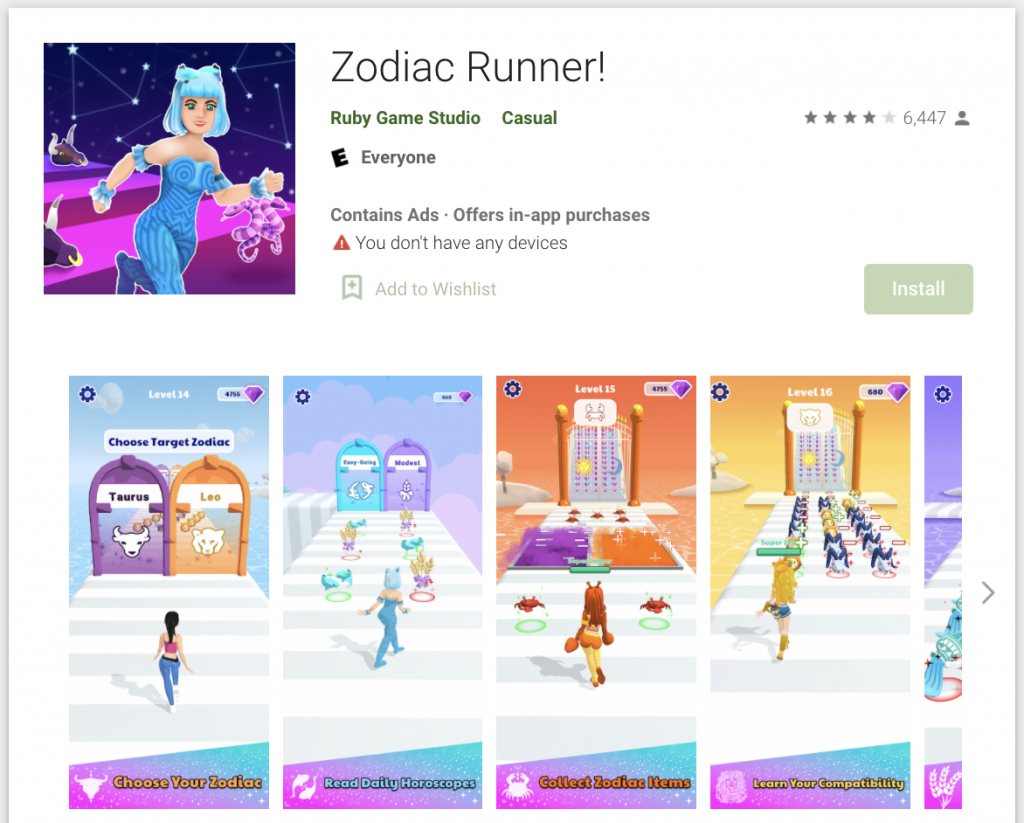
New runners are taking this idea and adding a strong theme or concept, like Zodiac Runner from Ruby Games. This game has both a female character and narrative element with a strong astrology theme. Combining these popular trends and helped the game reach #2 on both app stores.
2021 was also the year that the multiplier mechanic emerged. For runners with a crowd mechanic, multipliers make gameplay more satisfying by exponentially increasing the number of characters on-screen instead of one by one. This enhances the feeling of progression and keeps users more engaged.
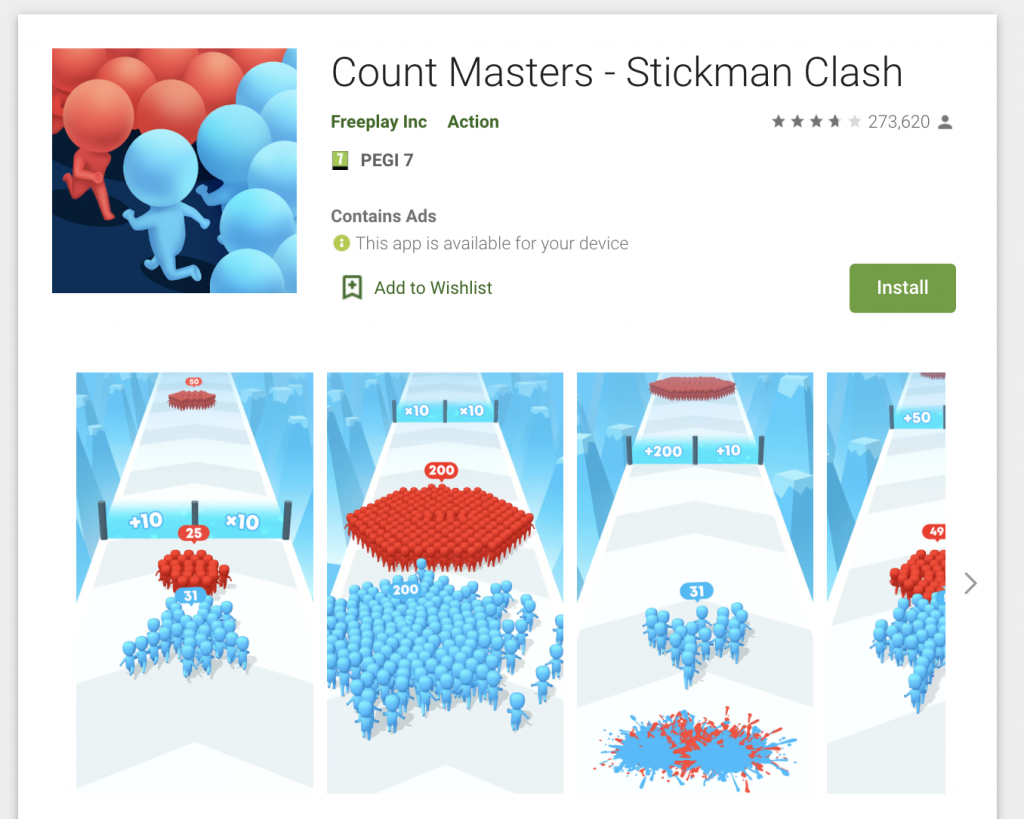
Now that you know the past and present trends, how can you capitalize on them and come up with your own unique runner game?
Tips for designing a relevant runner
The runner games reaching the top of the charts these days have a strong theme or concept. You can even go back and check the top hyper-casual charts from years past to inspire you - as we’ve seen, trends of the past can often inspire those of today. Look to social media platforms, too, like TikTok to help you come up with new ideas that have a high probability of being marketable - many hyper-casual runners in the top charts came from TikTok trends. You can look at trending videos and hashtags to inspire you, like the hashtag #investing on TikTok which has over 5.5B views. Homa Games took this trend and turned it into a highly marketable concept: Investment Run. The game went on to achieve over 9 million downloads on Android and reached the top 10 games in the US on both app stores.
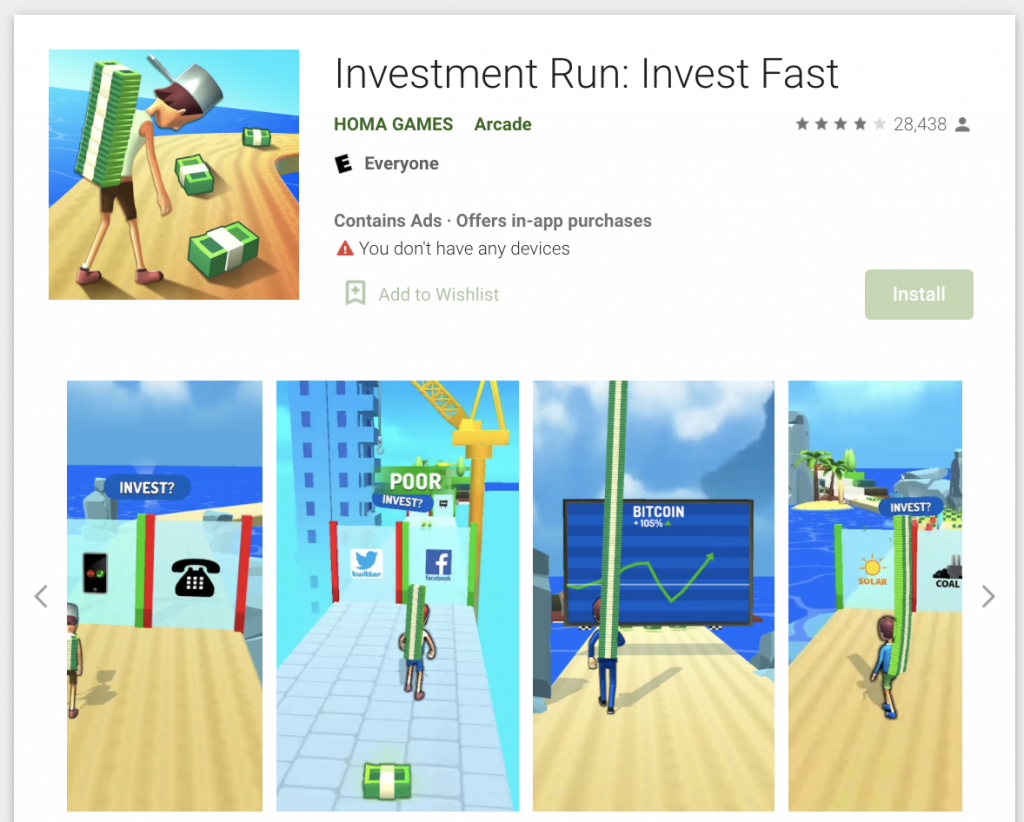
If a hashtag or video has a high view count (over 10 million) this can confirm your idea is likely to be marketable.
You can also look to popular hyper-casual simulation games to inspire your runner. Since they’re already in the top charts, they’ve proven to be marketable concepts - you can easily turn many of them into runner games. For example, Streamer Life from Ruby Games is a hyper-casual simulation game that reached #1 overall in the US.
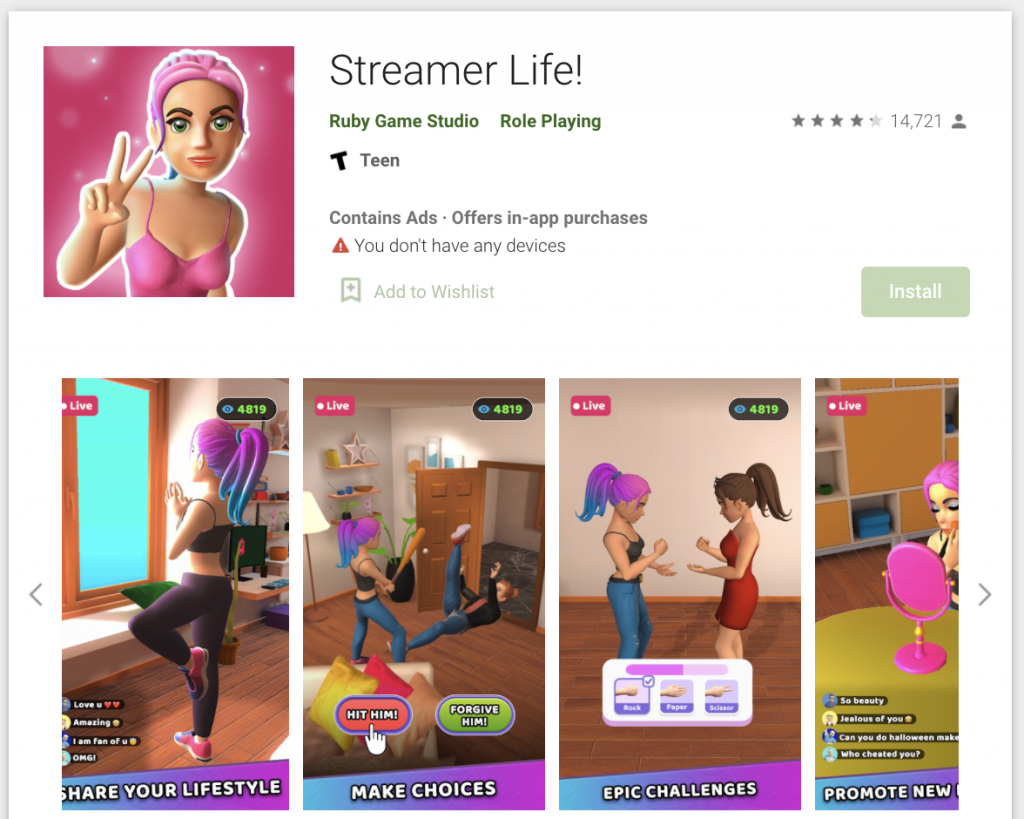
Maglab turned the popular concept into a runner game called Streamer Rush. Highlighting the transformation of the character in the creatives helped hook users and emphasize the trendy theme. Together with the engaging gameplay, the game reached #1 in the US and achieved over 4.6 million installs on Android.
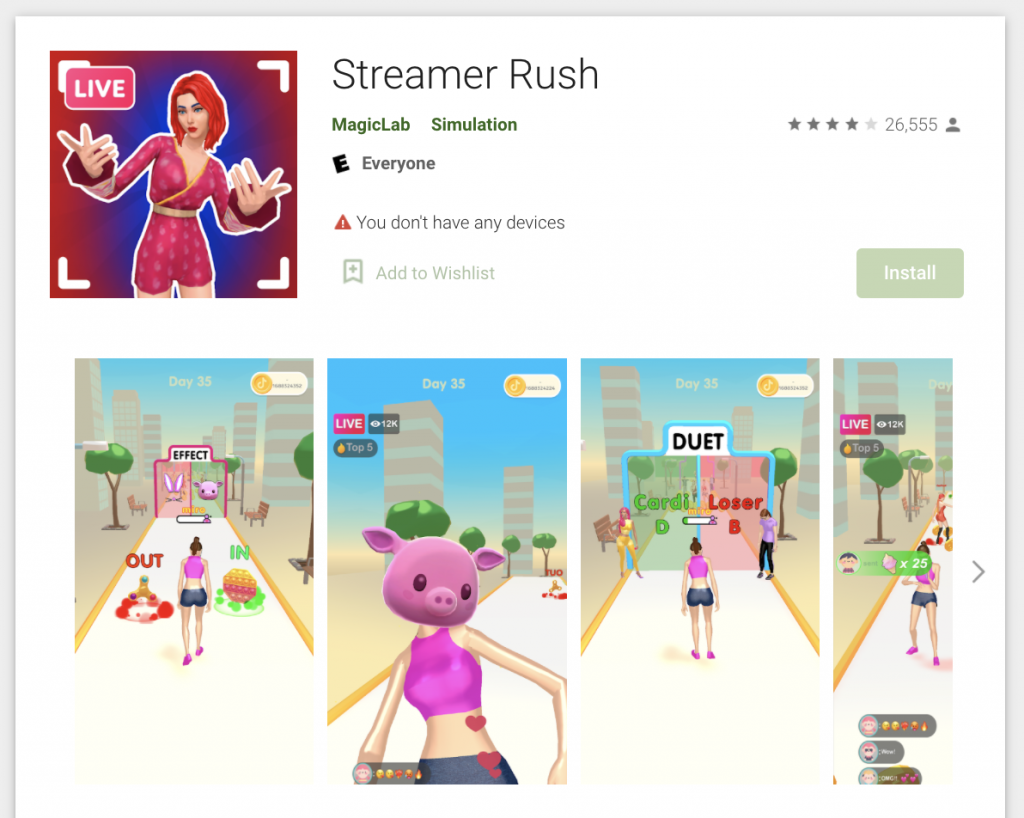
These ideas for coming up with a future hit runner game are a great place to start. If you’re looking for even more tips on designing and improving a runner, check out this blog from Suren Melkonyan, Game Designer at Supersonic. Some key points from this article include:
- Make your levels easier. The early runners games of 2018 and 2019 were more difficult than those of today, and they often required users to start a level over again if they failed. Today, runners should be harder to fail and more forgiving so you can keep users engaged and retain them for longer
- Use bright, light colors. Bold and optimistic colors tend to perform better in hyper-casual games and lead to lower CPI. Swap out darker colors for lighter hues and contrasting colors
- Shorten your level length. Hyper-casual users are seeking snackable games they can play for the 2-3 minutes that make up an average session length. Shorten your levels so players get the sense of satisfaction and progression that makes them want to return to your game and keep playing
To hammer the point home, it’s clear runners aren’t going anywhere. Keep up with the trends and use the information we’ve gone over here to take advantage of their timeless popularity. And if you have a runner prototype ready, submit it here for testing on our platform and let’s build the next hit together.
Let's put these tips to good use
Publish your game with Supersonic
